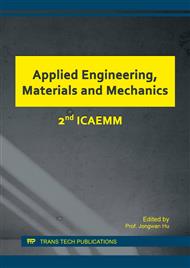p.165
p.173
p.178
p.185
p.192
p.198
p.204
p.209
p.217
Effects of Tunable Angle for Vortex Generators on Aerodynamic Performances of Airfoils
Abstract:
Vortex generators (VGs) are commonly adopted to control the flow separation, and many researches have investigated their effects on the aerodynamic performance of wind turbines. However, nearly no attentions are paid to the VGs’ installation angle. Thus, in this paper, to investigate the effects of the VGs’ installation angle on airfoils, numerical simulations are conducted by CFD on the finite wing of NACA0012. According to the finite airfoil with or without VGs, three-dimensional models are established and numerical simulations are carried out in detail. It could be seen clearly that the VGs’ installation angle produces a significant impact on the aerodynamic performances. For some installation angles, special ranging from 45° to 90°, VGs can improve the lift-drag ratio apparently, even by 34.5%. While angle ranges from 15° to 30°, VGs negatively influence the lift-drag ratio. Furthermore, the fluctuation phenomenon is discussed through analysis of the streamlines and vortices. Based on those results, optimal aerodynamic performances could be achieved by the active control of the VGs’ installation angle.
Info:
Periodical:
Pages:
192-197
Citation:
Online since:
October 2017
Authors:
Price:
Сopyright:
© 2017 Trans Tech Publications Ltd. All Rights Reserved
Share:
Citation:


